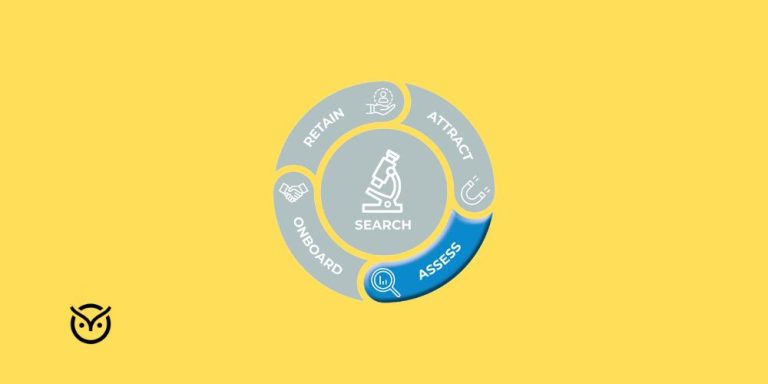How to Optimize Job Descriptions for SEO: A Comprehensive Guide

TL;DR
- Use relevant, specific keywords in titles and throughout text.
- Avoid keyword stuffing—keep it natural.
- Write an engaging, keyword-rich company description.
- Break text into short sections and bullet points.
- Add visuals (icons, images, infographics).
- Keep job titles simple and clear.
- Use location keywords for local SEO.
- Add internal and external links.
- Follow Google for Jobs formatting guidelines.
- Share postings across social, boards, and email.
- Track clicks, applications, and engagement metrics.
The Challenge of Finding Right Candidates
Imagine spending hours crafting the perfect job description only to realize it’s buried in search results, invisible to the people it’s meant to reach. Frustrating, isn’t it?
Many businesses face this problem, but few know the solution—Search Engine Optimization (SEO).
SEO isn’t just for websites or blogs. It’s a powerful tool for recruiters. By optimizing your job descriptions, you can ensure they appear at the top of search results, attract the right candidates, and reduce hiring time.
In this guide, we’ll teach you step-by-step how to optimize job descriptions for SEO, helping you connect with the perfect candidate faster and more efficiently.
Why SEO is Crucial for Job Descriptions
Understanding the Role of SEO in Recruitment
Search engines like Google and platforms like Google for Jobs play a huge role in how job seekers find opportunities. Recruitment SEO helps ensure your job postings appear prominently in search results, giving them a competitive edge.
The Benefits of SEO-Optimized Job Descriptions
- Higher Visibility: SEO improves the chances of your job posting appearing in front of the right audience.
- Better Quality Applicants: Candidates who see clear, targeted descriptions are more likely to apply if they’re a good fit.
- Time Efficiency: By attracting the right applicants, you reduce time spent filtering through irrelevant applications.
1. Do Use Relevant Keywords and Phrases That Align With Job Seeker Search Behavior
Keywords from job descriptions are the backbone of SEO, and choosing the right ones can make or break your job description’s visibility. These are the words and phrases that job seekers type into search engines when looking for opportunities.
How to Identify and Choose the Right Keywords for Your Job Postings
- Brainstorm Relevant Terms: Think like your ideal candidate. What would they search for? Examples include “Remote Graphic Designer” or “Entry-Level Data Analyst.”
- Use Keyword Tools for Research: Platforms like Google Keyword Planner, SEMrush, or Ubersuggest can help identify high-traffic keywords for job search in your industry.
- Focus on Specific Phrases: Avoid overly generic terms like “Engineer.” Instead, go for more specific titles like “Mechanical Engineer in Chicago.”
Where to Place Keywords in Your Job Description for Maximum Effectiveness
- Job Title: Include the primary keyword in the title, as this is the first thing search engines and candidates see.
- Headers and Subheadings: Use secondary keywords to break up content and improve readability.
- Job Details: Naturally incorporate job description keywords throughout the description without overloading the text.
2. Don’t Overuse Keywords or Overload Your Job Post With Repetitive Phrases
While keywords are essential, overusing them can harm your job description. Search engines penalize posts that feel spammy, and candidates are turned off by unnatural, repetitive text.
Why Overusing Keywords Hurts SEO and Candidate Engagement
- Decreases Readability: Candidates may find it challenging to understand the role when keywords are overused.
- Lowers Search Rankings: Search engines prioritize user experience, and keyword stuffing sends red flags.
Tips to Balance Keywords and Maintain Readability
- Use each keyword naturally, keeping a density of about 1–2%.
- Focus on clarity and write for humans first, search engines second.
Example: Instead of repeating “remote job” excessively, vary it with phrases like “work-from-home role” or “virtual position.”
3. Do Optimize Your Company Description to Highlight What Makes You Unique
A well-written company description isn’t just a background detail; it’s a powerful tool for attracting candidates and improving SEO. Your description should reflect your mission, values, and workplace culture.
How to Write a Company Description That Boosts SEO and Resonates With Candidates
- Emphasize Your Mission and Values: Share what your company stands for and what sets you apart.
- Use Relevant Keywords: Incorporate industry-specific phrases or location-based terms to improve searchability.
- Highlight Your Culture: Describe your work environment to give candidates a feel for what it’s like to work with you.
Example of an Engaging and SEO-Friendly Company Description
“We’re a mission-driven organization in San Francisco committed to reducing waste through innovative technology. Our collaborative team values curiosity, creativity, and impact.”
4. Don’t Create Walls of Text That Overwhelm Job Seekers and Reduce Engagement
Large blocks of text can be intimidating and difficult to read, especially for busy job seekers who are skimming multiple listings. Breaking up your content makes it more digestible and appealing.
The Negative Impact of Long Paragraphs on SEO and User Experience
- Poor Readability: Candidates are less likely to engage with dense, unformatted text.
- Lower Rankings: Search engines favor content that is structured and scannable.
How to Format Job Descriptions for Maximum Readability
- Use Bullet Points for Responsibilities and Qualifications: Simplify information into clear lists.
- Add Subheadings to Organize Sections: Break content into chunks like “Benefits” or “Responsibilities.”
- Write Short Sentences: Aim for clarity and simplicity to hold attention.
5. Create a Visual Experience
Words are important, but visuals can elevate your job post. Here’s how to add a visual touch:
- Include Icons for Sections: Make headings like “Responsibilities” or “Benefits” stand out.
- Use a Video or Image of Your Workspace: Showcase your office or team culture.
- Add a Simple Infographic: If your job includes specific metrics or achievements, visualize them.
Visual elements don’t just attract more attention—they also make candidates spend more time on your page, which improves SEO.
6. Don’t Overcomplicate Your Job Titles With Jargon or Creative Terms
Your job title is the first impression of your posting. Overly creative titles might be fun, but they can confuse candidates and lower search rankings.
How to Craft Clear and SEO-Friendly Job Titles That Attract the Right Audience
- Keep It Simple and Standard: Use widely recognized terms like “Marketing Manager” instead of “Marketing Ninja.”
- Avoid Abbreviations and Acronyms: Unless commonly used, spell out terms for clarity.
- Include Specifics When Relevant: Add “Remote,” “Senior,” or “Entry-Level” to make the title more precise.
Example: Instead of “Happiness Hero,” use “Customer Service Representative.”
7. Do Rely on Local SEO to Attract Candidates in Specific Locations
Even in a remote-friendly world, location still matters. Mentioning your city, state, or country ensures your job post appears in local searches.
Why Location-Based Keywords Are Essential for Job Description SEO
- Improves Relevance for Candidates Searching in Specific Areas: Job seekers often include location terms in their searches.
- Boosts Visibility for Local Searches: Search engines prioritize posts with clear location details.
How to Incorporate Local SEO Into Job Postings
- Add location to the job title (e.g., “Software Engineer – Austin, TX”).
- Include location in the description and company details.
8. Don’t Create a Silo – Link to Relevant Pages to Boost SEO and Candidate Experience
Adding links to your job description creates a better user experience and improves SEO by establishing connections to authoritative pages.
The Importance of Internal and External Links for SEO and Usability
- Internal Links: Direct candidates to your “About Us” page, other job listings, or relevant company blog posts.
- External Links: Share links to industry certifications, tools, or related resources.
Best Practices for Linking in Job Descriptions
- Use descriptive anchor text like “Learn more about our company.”
- Ensure all links are relevant and functional.
9. Do Consider Google for Jobs and Optimize Your Posting for This Powerful Platform
Google for Jobs is a key tool for visibility. By following its guidelines, your job posts can appear prominently in searches.
How to Format Your Job Description for Google for Jobs
- Include All Key Fields: Title, location, job type, and salary range (if applicable).
- Write a Compelling Meta Description: Highlight the role’s main benefits.
10. Do Share Your Postings
Even the best SEO can’t replace the power of sharing. Promote your job posting across:
- Social Media: Platforms like LinkedIn, Facebook, and even Instagram are great for reaching your target audience.
- Job Boards: Use popular sites like Indeed, Glassdoor, and niche boards specific to your industry.
- Email Newsletters: Share openings with your subscribers.
Pro Tip: Always link back to the job description on your website to drive traffic and improve SEO.
11. Do Track the Success of Your Optimized Job Descriptions With SEO Metrics
Once your job description is live, measuring its performance is essential to refine your strategy and improve future posts.
Key Metrics to Analyze for SEO and Hiring Effectiveness
- Click-Through Rate (CTR): How many people are clicking on your post?
- Application Conversion Rate: Are candidates taking action after viewing?
- Time on Page: Longer visits indicate higher engagement.
A Better Way to Recruit
Optimizing job descriptions for SEO doesn’t just help you rank higher—it helps you connect with the right people.
By using clear employment titles descriptions, relevant keywords from job description, and user-friendly formatting, you can create job posts that resonate with candidates and bring them to your doorstep.
Remember, your goal isn’t just to fill a role; it’s to find someone who aligns with your mission and values.
With these engine optimization techniques and strategies for job description keywords, you’re not just hiring—you’re building a team that will take your organization to the next level.
Now it’s your turn: Try these tips on how to optimize job descriptions for SEO and share your experience. Let us know how using keywords in description, and job title search strategies has helped you find the perfect hire!






